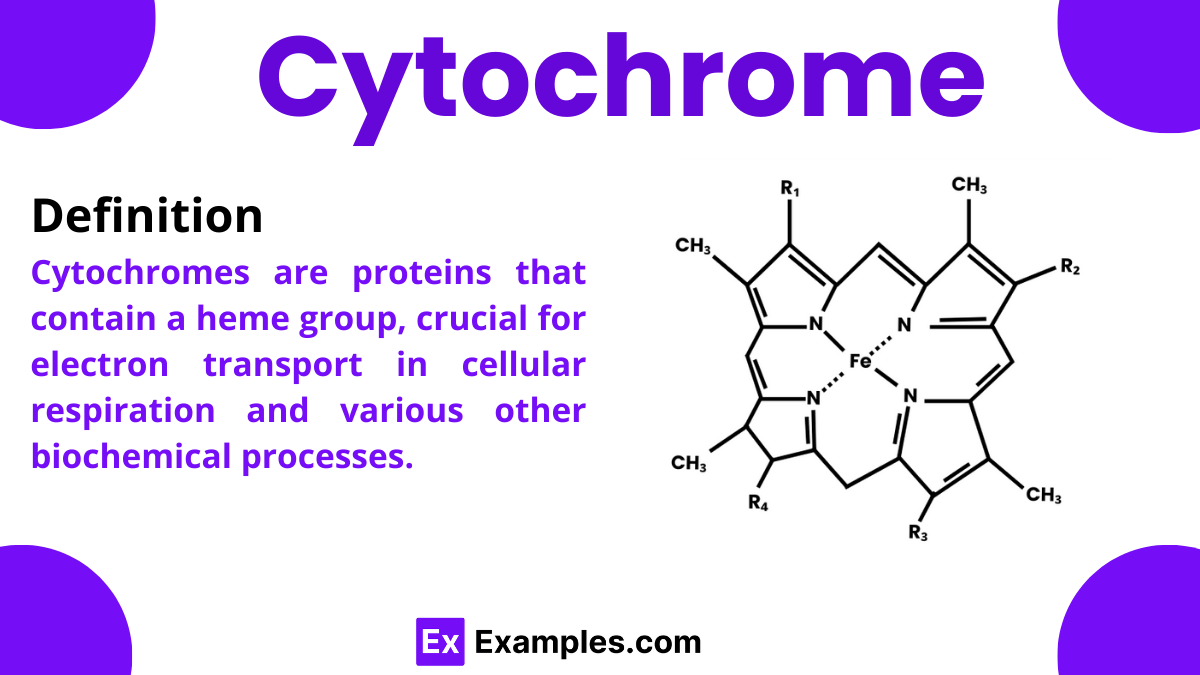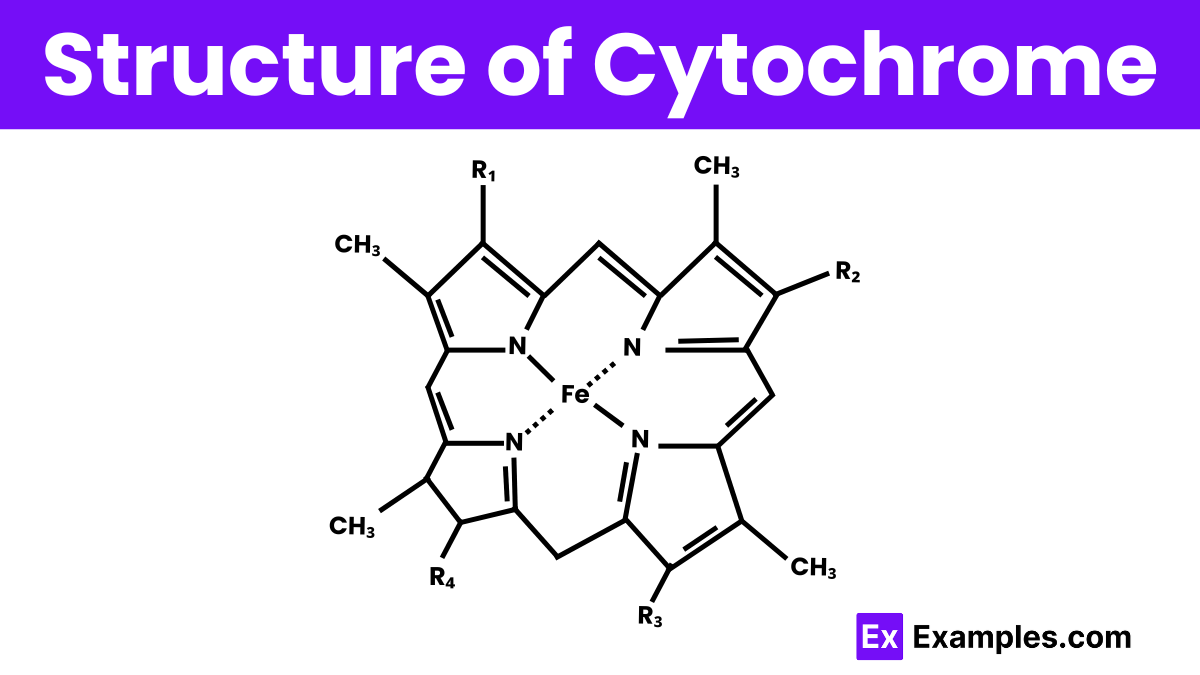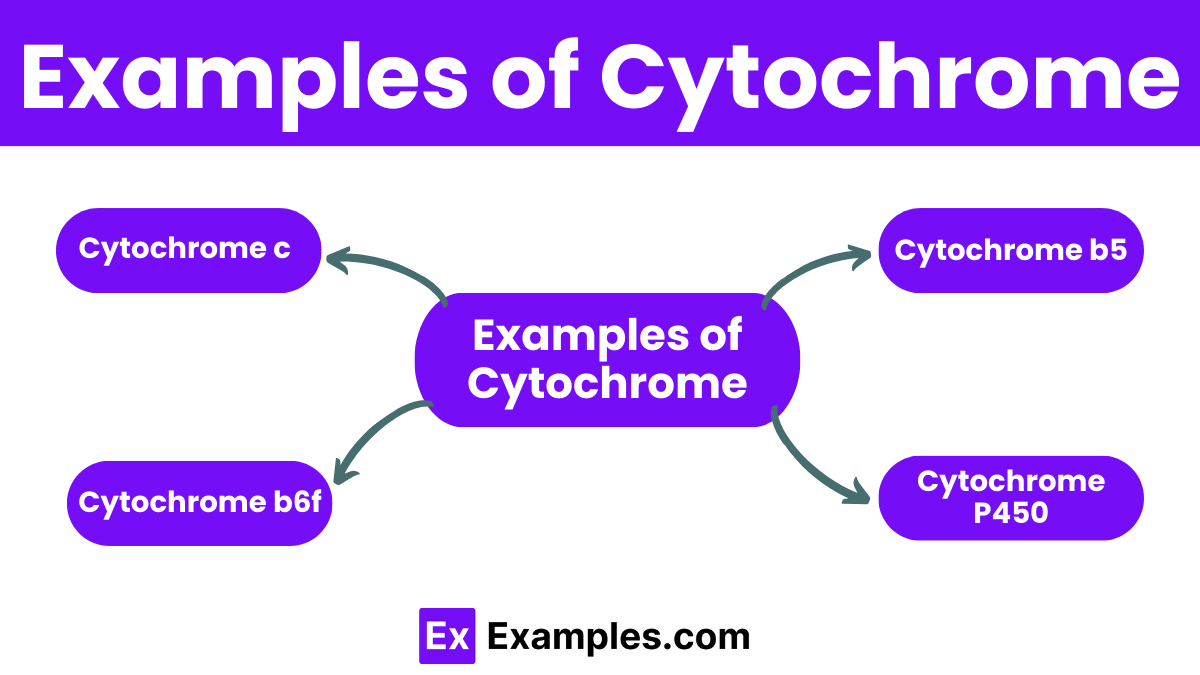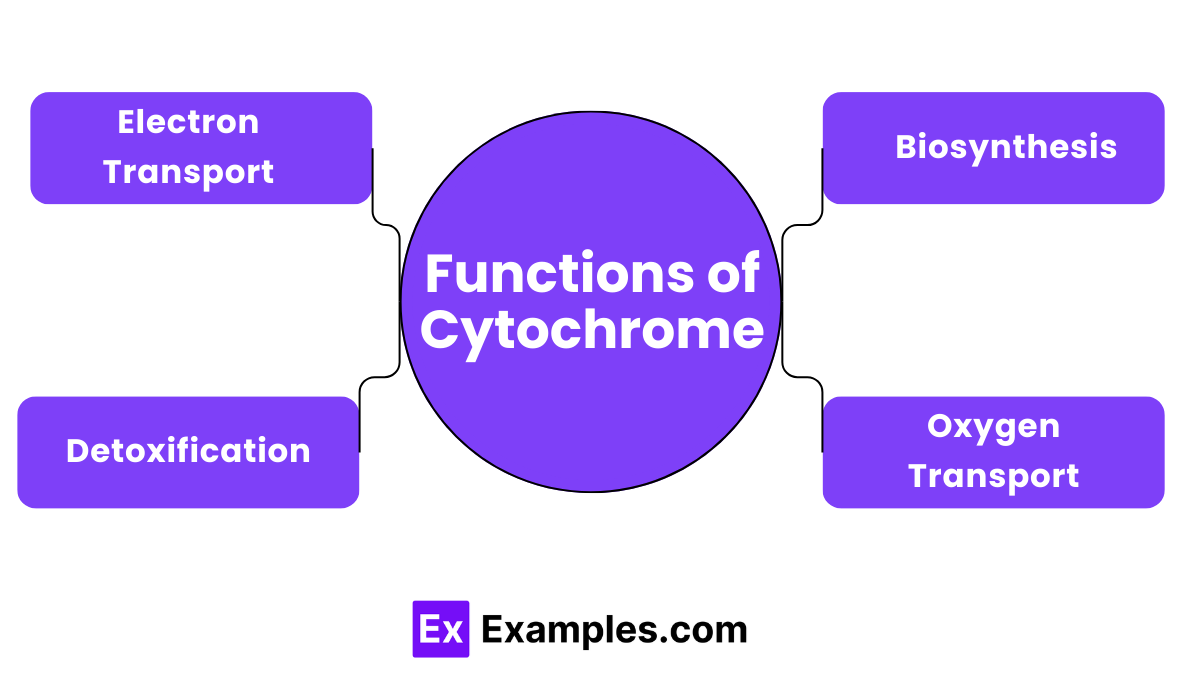What is the primary function of cytochromes in cells?
DNA replication
Protein synthesis
Electron transport
Cell division


Cytochromes are complex compounds essential to the energy-producing processes in cells. These proteins, found within the cell’s powerhouses called mitochondria, play a crucial role in the chemistry of life. They help in transferring electrons during cellular respiration, which is the process cells use to convert oxygen and nutrients into energy. This function is vital for the survival of nearly all forms of life, from simple bacteria to complex human cells. Understanding cytochromes helps us appreciate how living organisms produce energy to sustain various functions.
Cytochrome a/a3 is found primarily in the mitochondria and plays a critical role in the electron transport chain’s final steps. It helps produce water by transferring electrons to oxygen, which is vital for energy production.
This type of cytochrome functions within the mitochondria’s electron transport chain, where it facilitates the transfer of electrons between different protein complexes, aiding in efficient energy conversion.
Cytochrome c is crucial for apoptosis, or programmed cell death. When a cell is damaged, cytochrome c moves from the mitochondria to the cytoplasm, initiating the cell’s self-destruct mechanisms.
Similar to cytochrome c, cytochrome c1 operates within the mitochondria. It plays an integral role in the electron transport chain by transferring electrons to cytochrome c, maintaining the flow of energy production processes.

Cytochromes are structured around a heme group, which is a complex molecule with an iron atom at its center. This iron atom is key to the protein’s function, as it can easily gain and lose electrons, making it essential for electron transport in cellular respiration. The rest of the cytochrome protein forms a protective pocket around the heme, ensuring that the iron atom interacts appropriately with other molecules during electron transfer. This design allows cytochromes to effectively facilitate energy production within the cell.
Cytochrome c is a small, highly conserved protein that belongs to a class of proteins known as hemoproteins because it contains a heme group. This heme group holds an iron atom that plays a crucial role in electron transport within the cell. The protein is water-soluble and found in the space between the inner and outer membranes of the mitochondria, where it transfers electrons between complexes in the electron transport chain. This function is vital for the production of ATP, the cell’s main energy source.

Cytochromes are primarily found within the mitochondria of almost all types of cells in animals, plants, and many microorganisms. These proteins are crucial for the process of cellular respiration, which generates energy. Additionally, certain types of cytochromes are also located in other cell parts, such as the endoplasmic reticulum and chloroplasts in plants, where they play roles in photosynthesis and detoxification. This wide distribution highlights their essential role in various cellular functions across different life forms.

Cytochromes are key players in the electron transport chain within mitochondria. They transfer electrons through a series of reactions that ultimately generate ATP, providing essential energy for various cellular functions.
In certain organisms like bacteria and plants, cytochromes aid in transporting oxygen. This function is crucial for supporting respiratory and photosynthetic processes that sustain life.
Cytochromes, particularly those from the Cytochrome P450 family, play a significant role in detoxifying harmful substances. They help modify drugs and toxins in the liver, making them easier to eliminate from the body, thereby safeguarding health.
Cytochromes are involved in the biosynthesis of vital compounds such as cholesterol, steroids, and other lipids. This activity is essential for maintaining cell membrane integrity and producing necessary hormones.
Cytochrome c is vital for cellular respiration, transferring electrons in the electron transport chain. It’s essential for energy production in cells.
Cytochromes facilitate electron transport in cells by transferring electrons within the electron transport chain, essential for ATP production.
Cytochrome c is the most common cytochrome, known for its role in the electron transport chain and apoptosis.
Text prompt
Add Tone
10 Examples of Public speaking
20 Examples of Gas lighting
What is the primary function of cytochromes in cells?
DNA replication
Protein synthesis
Electron transport
Cell division
Cytochromes contain which type of prosthetic group?
Heme
Flavin
NAD
Coenzyme A
In which cellular organelle are cytochromes primarily found?
Nucleus
Ribosome
Mitochondria
Golgi apparatus
Which cytochrome is the last enzyme in the electron transport chain of mitochondria?
Cytochrome c
Cytochrome b
Cytochrome a
Cytochrome c oxidase
What type of reaction do cytochromes catalyze?
Hydrolysis
Phosphorylation
Redox reactions
Decarboxylation
Cytochromes are classified into several types based on their heme groups. Which type is involved in mitochondrial electron transport?
Cytochrome P450
Cytochrome c
Cytochrome b5
Cytochrome b
Cytochrome P450 enzymes are primarily involved in which biological process?
DNA replication
Detoxification
Protein synthesis
Photosynthesis
How many heme groups does cytochrome c oxidase contain?
One
Two
Three
Four
Which of the following metals is a key component of the heme group in cytochromes?
Zinc
Magnesium
Iron
Copper
Cytochrome b6f is part of the electron transport chain in which type of organism?
Bacteria
Plants
Fungi
Animals
Before you leave, take our quick quiz to enhance your learning!

